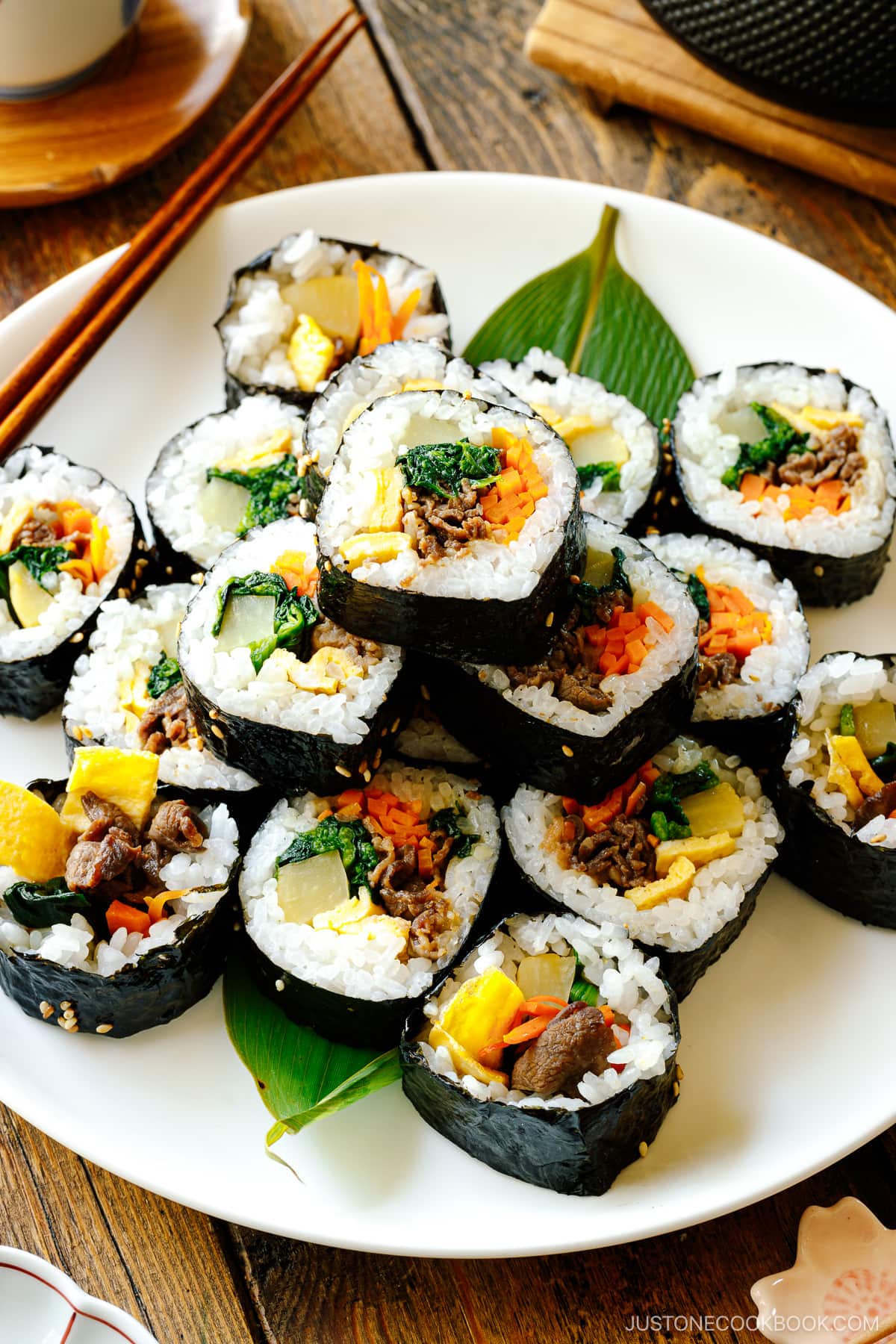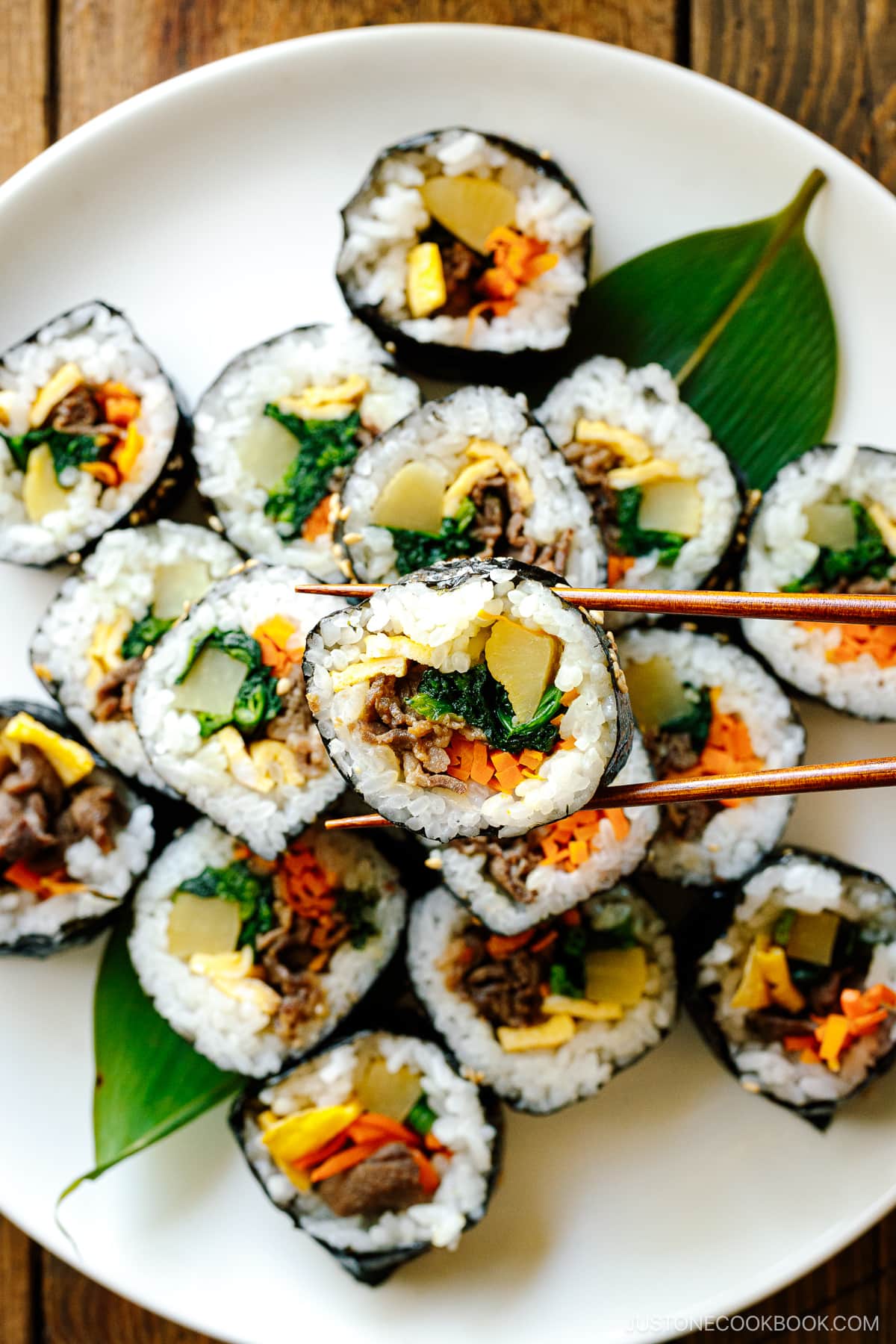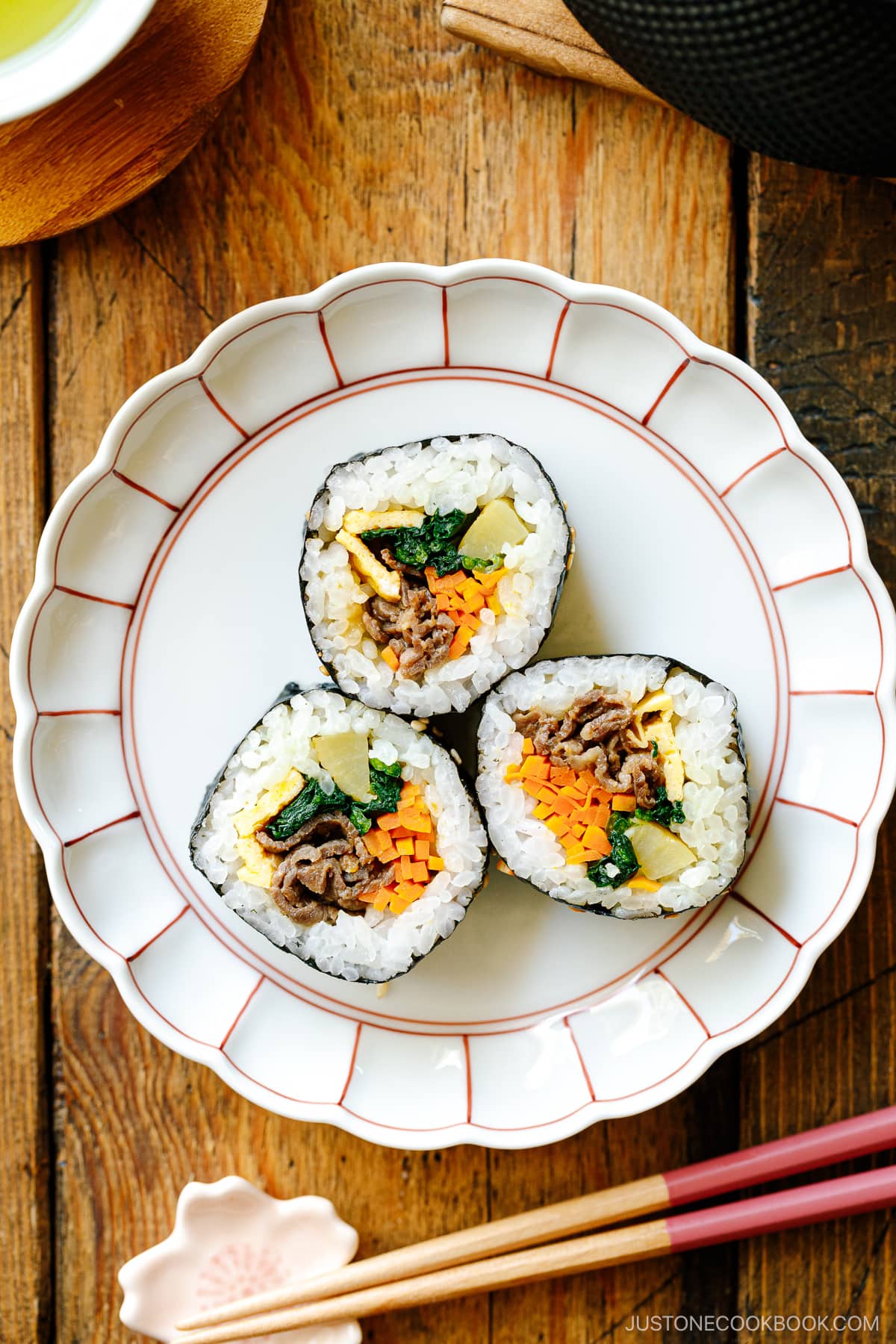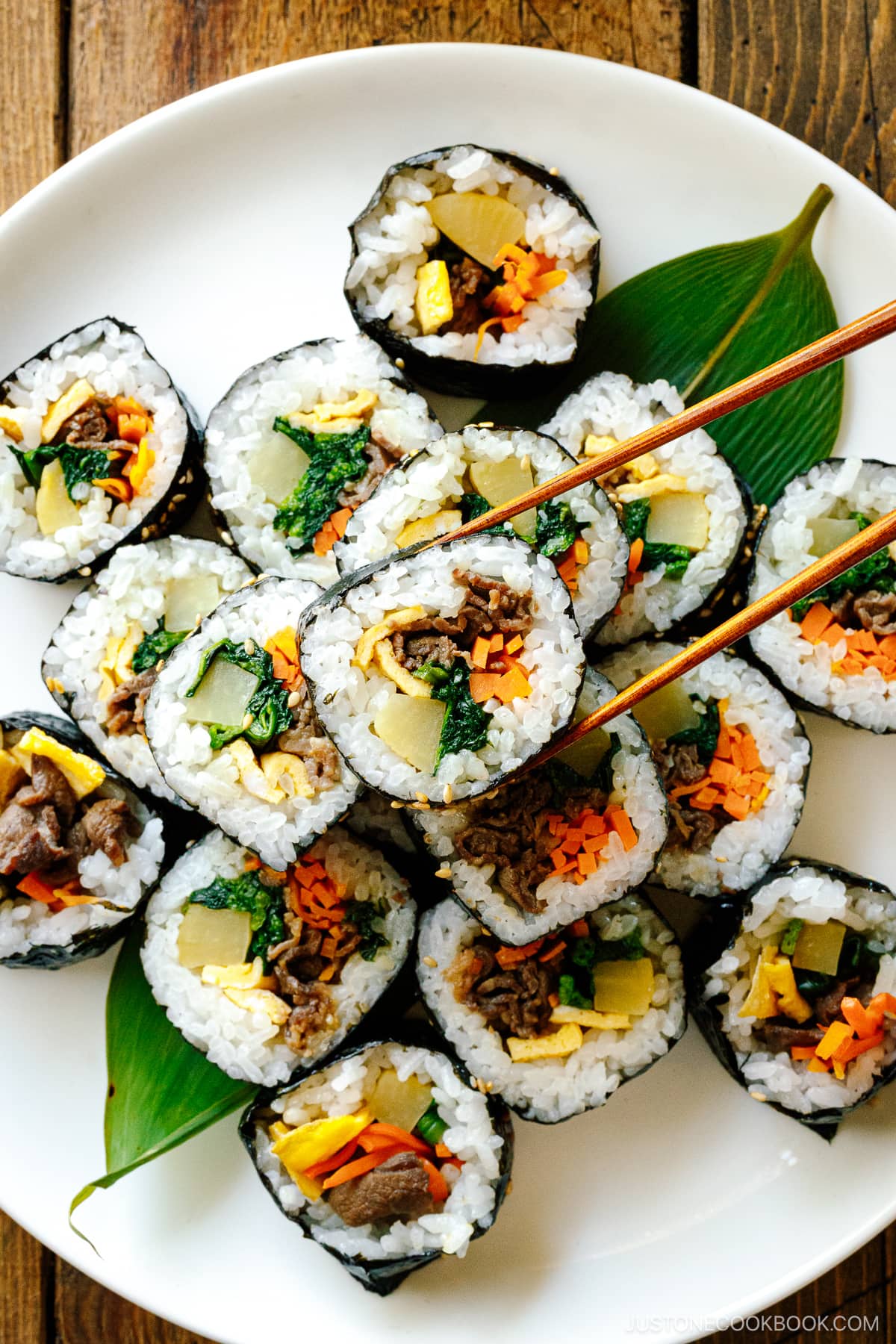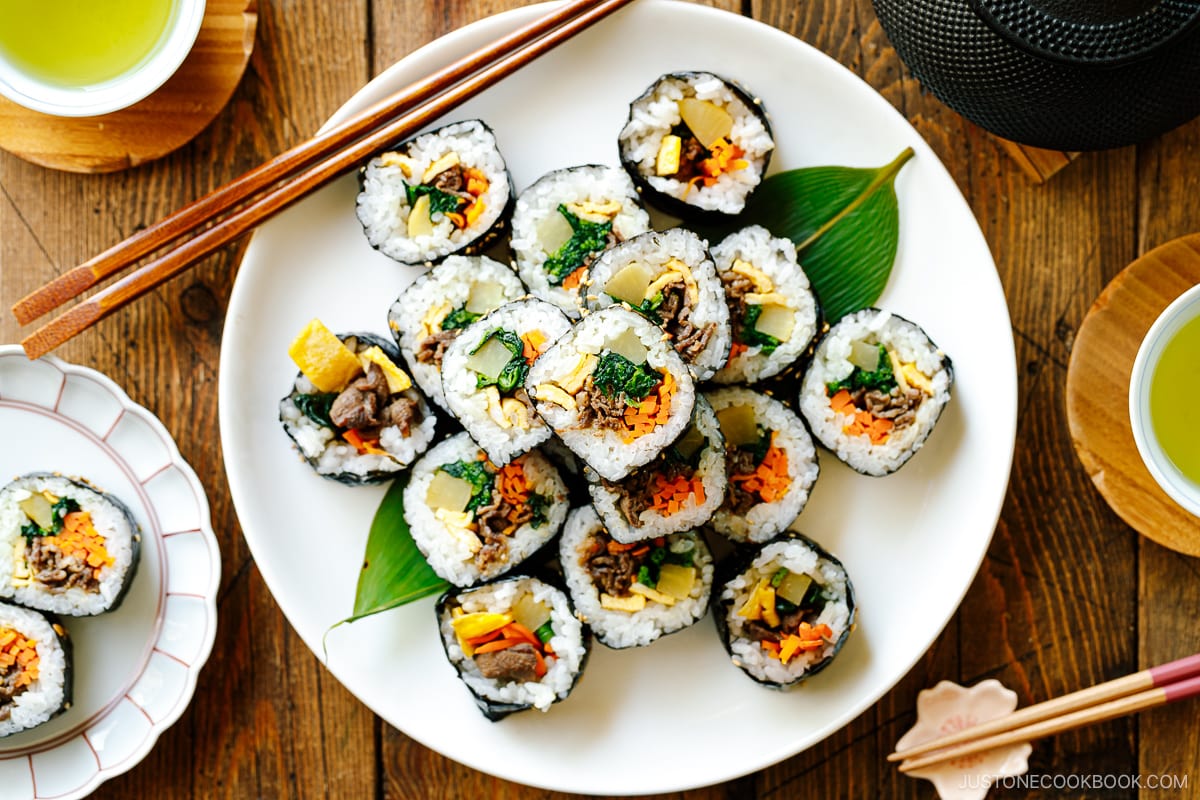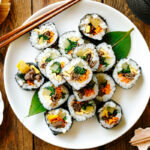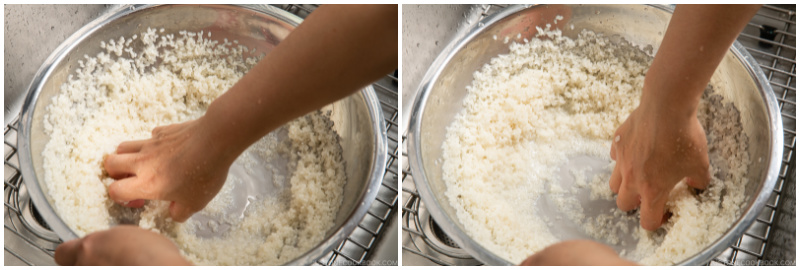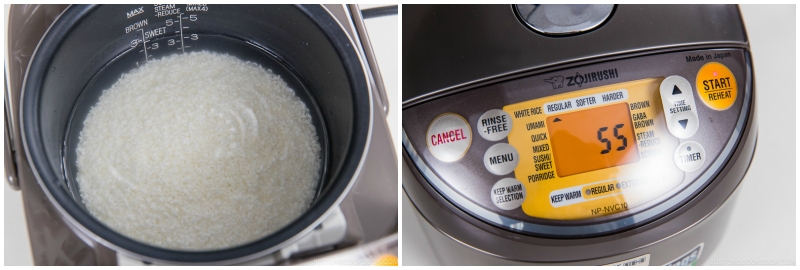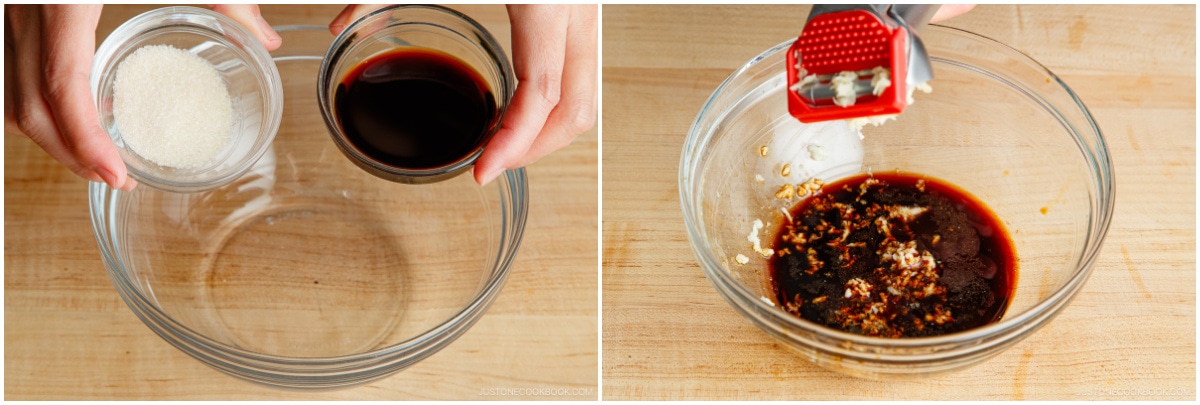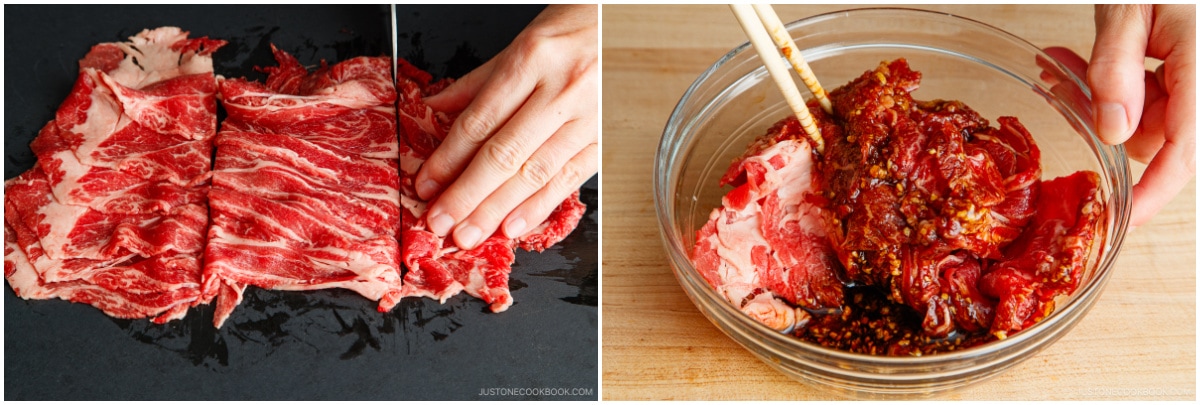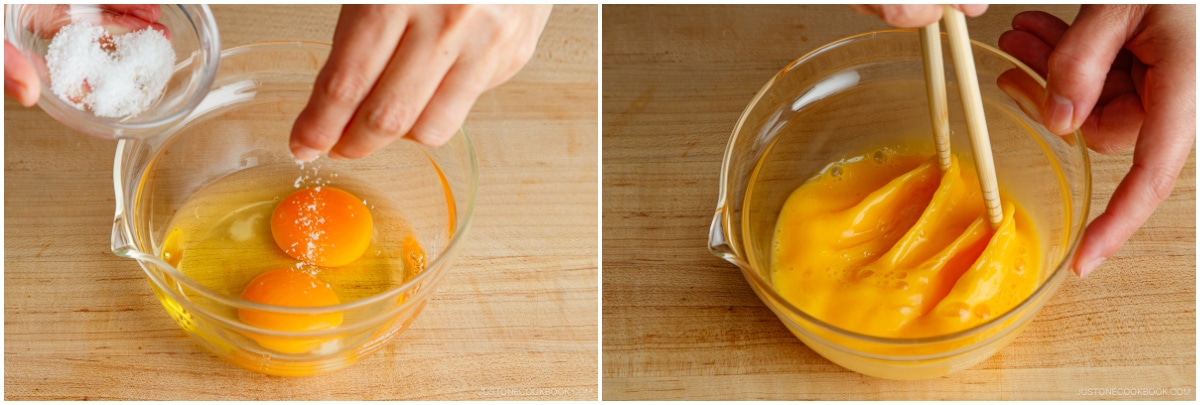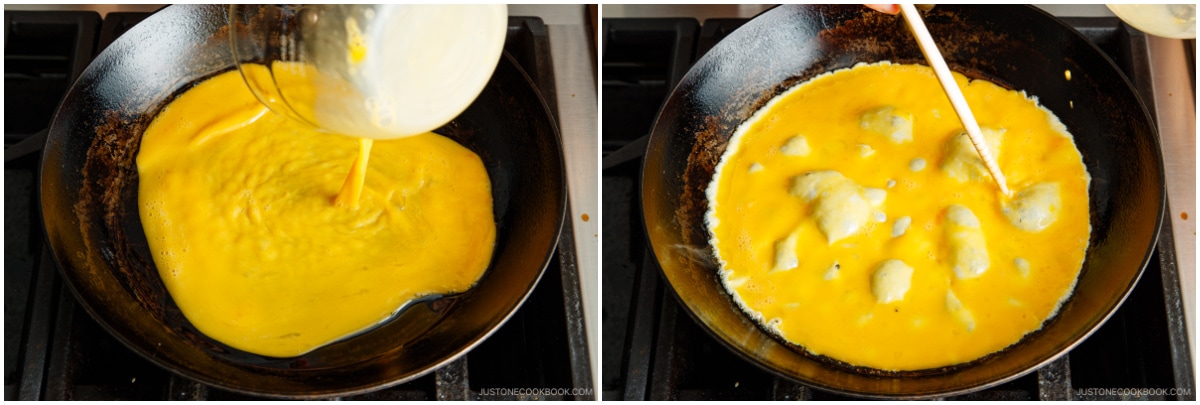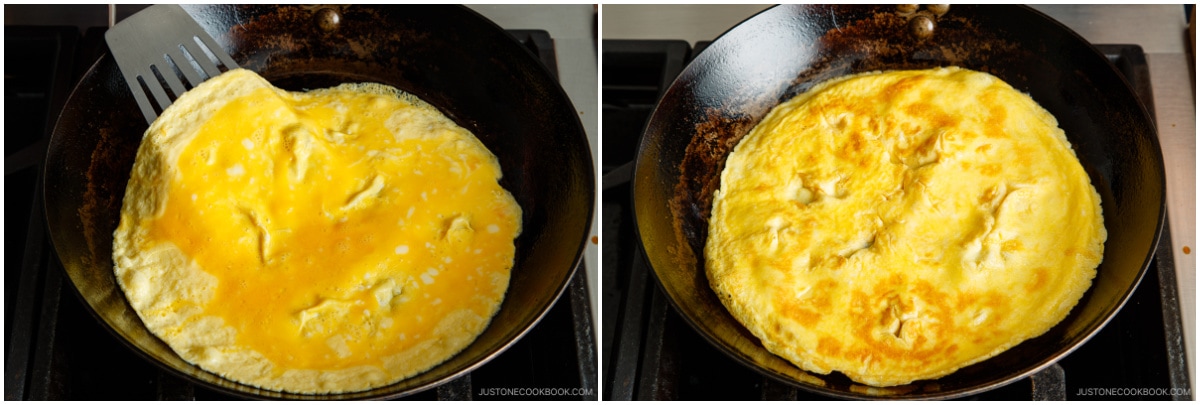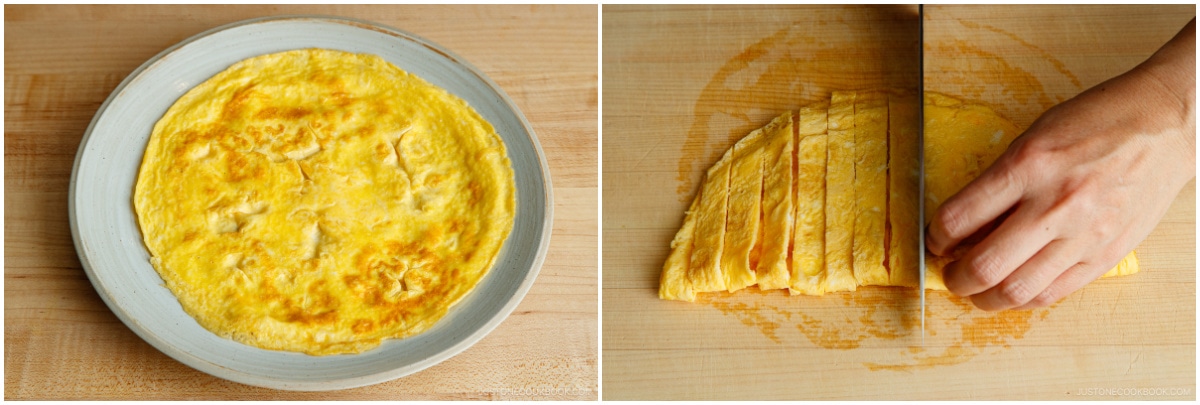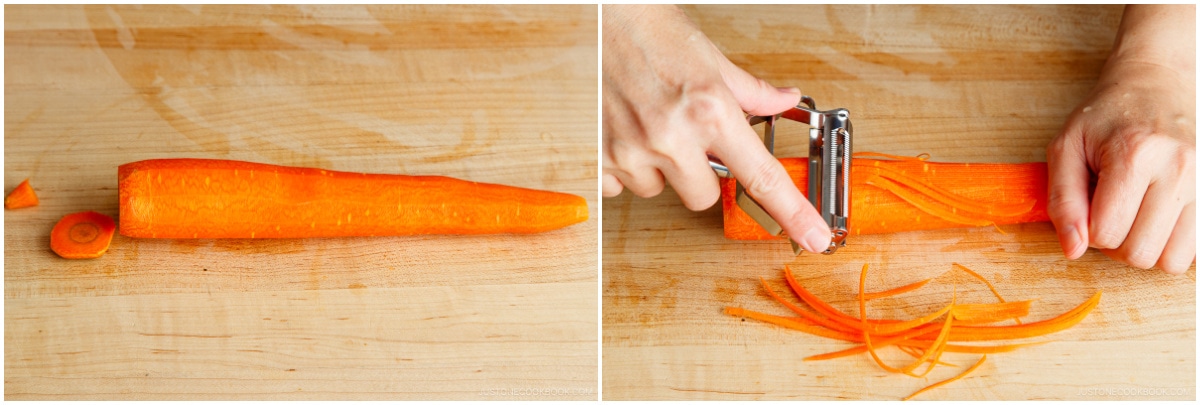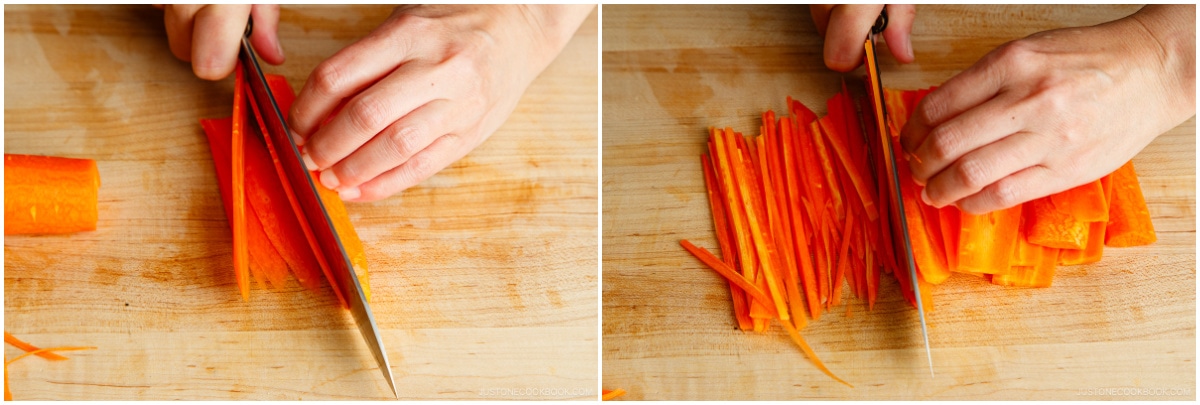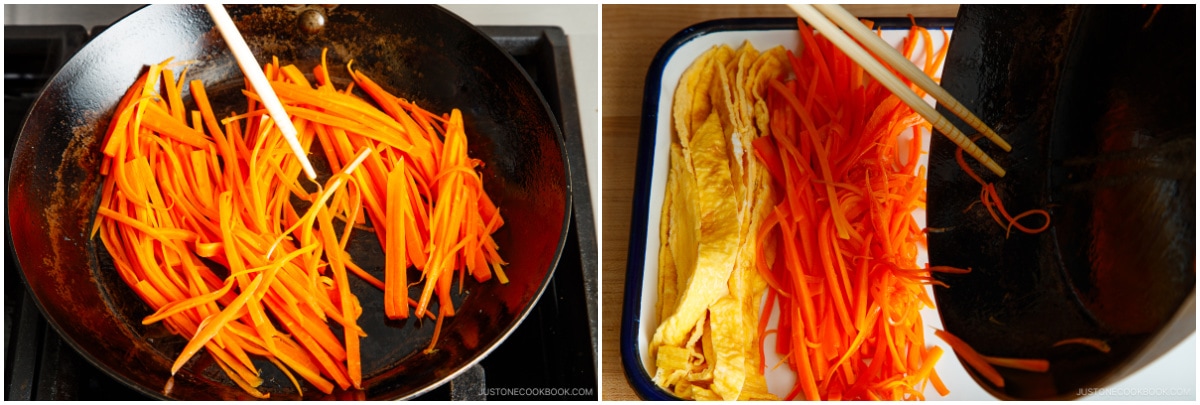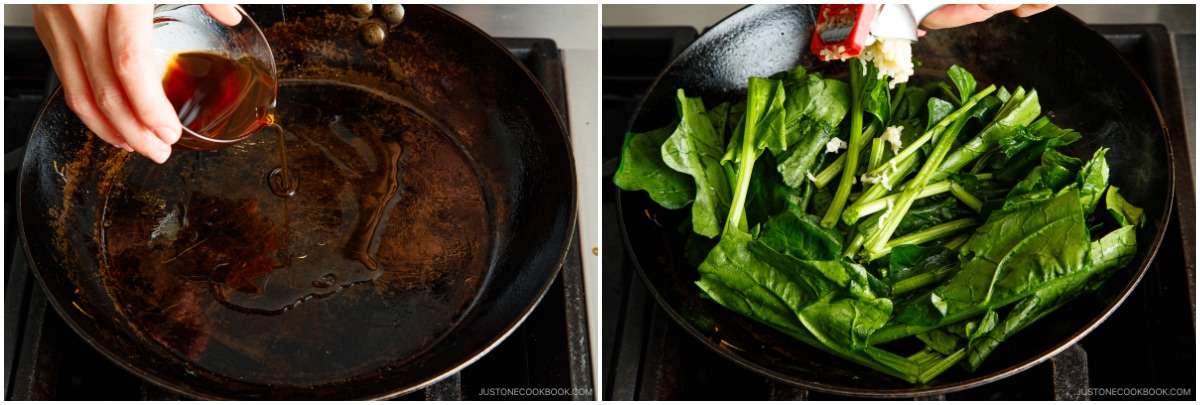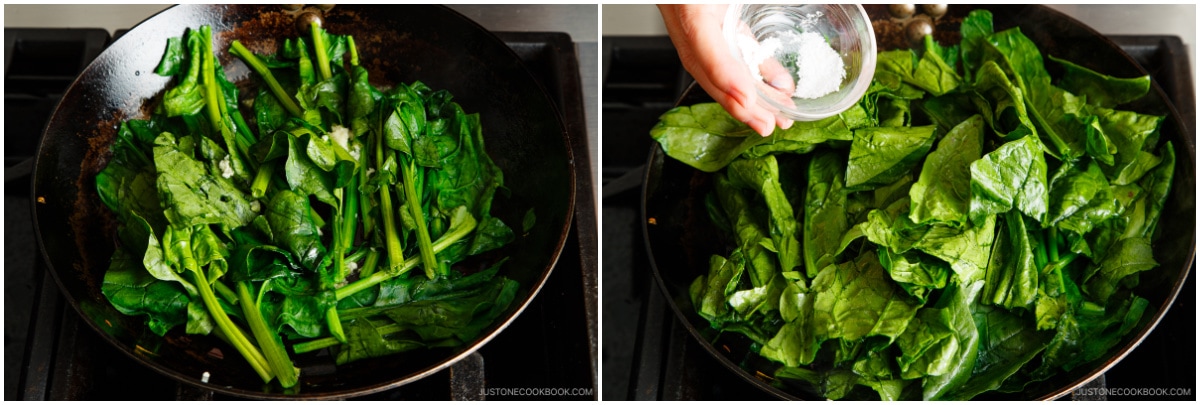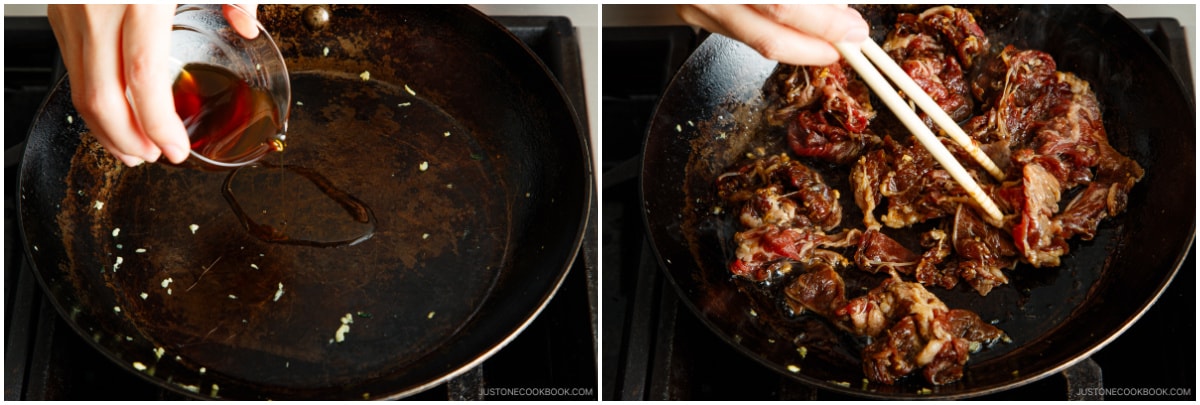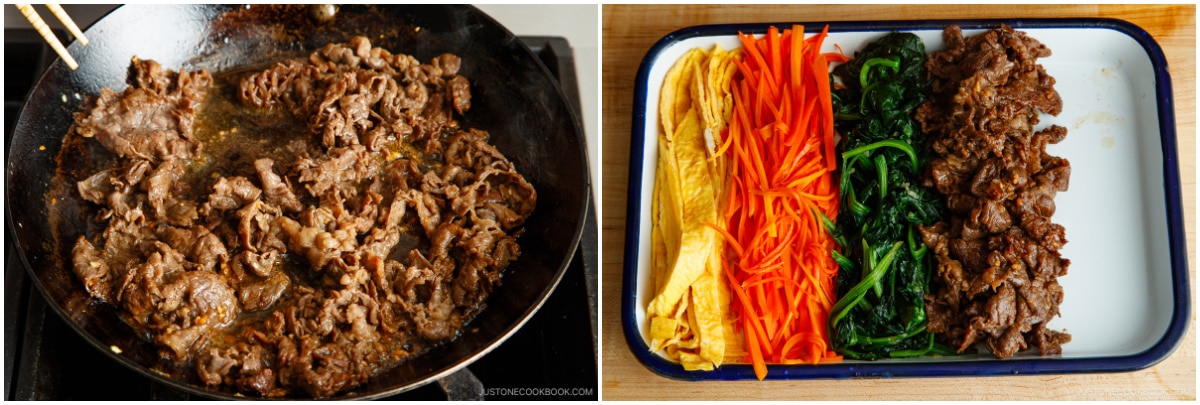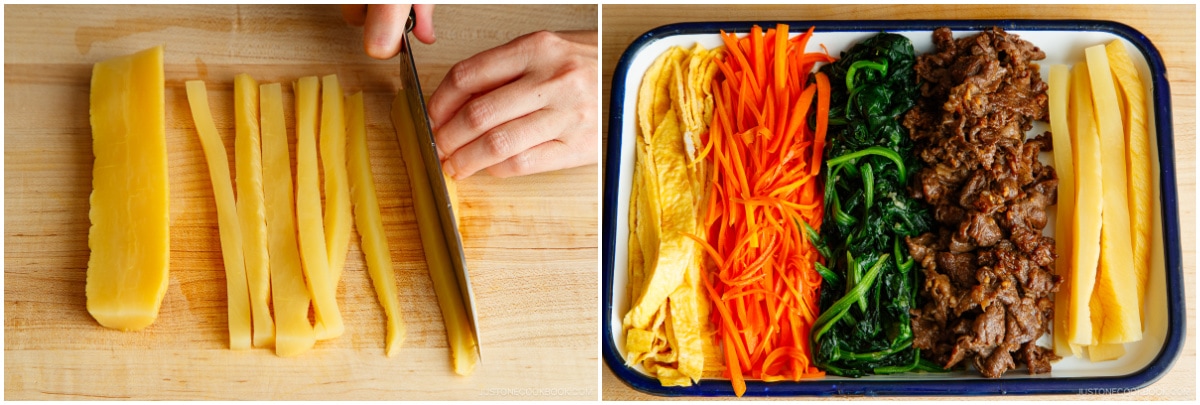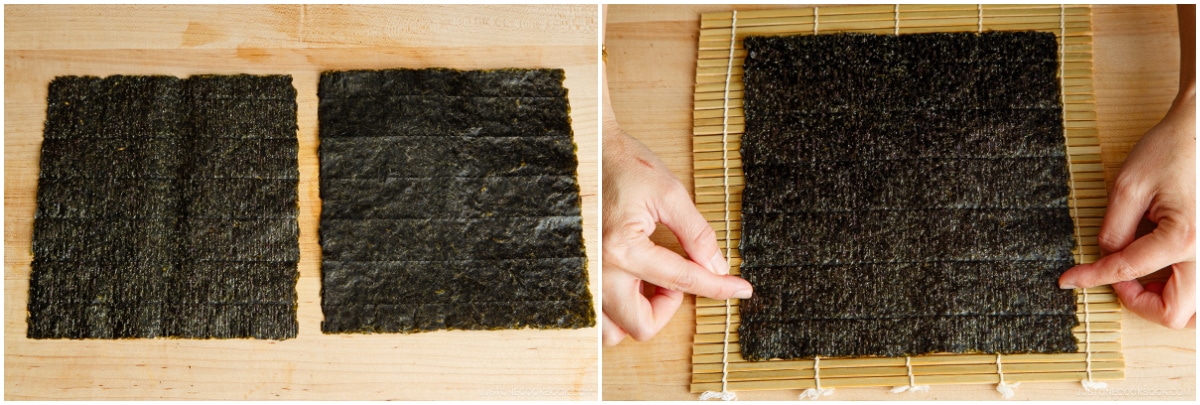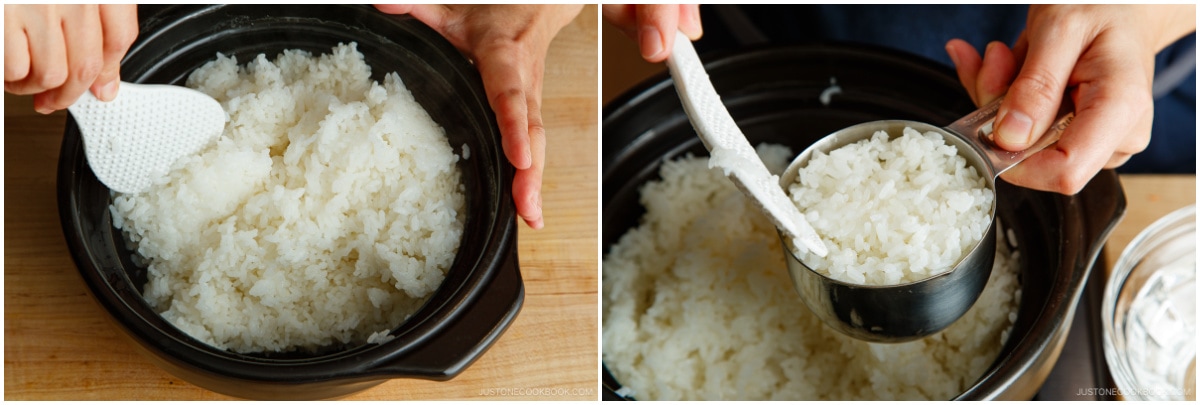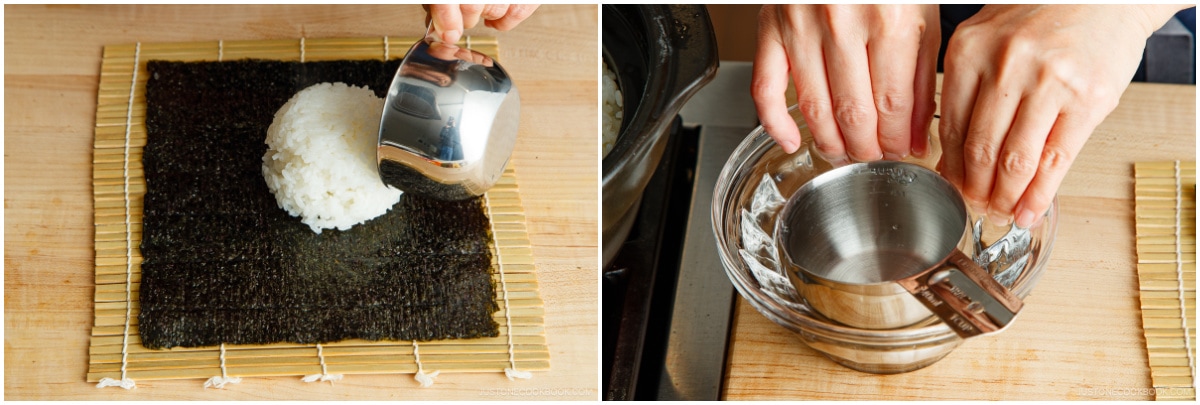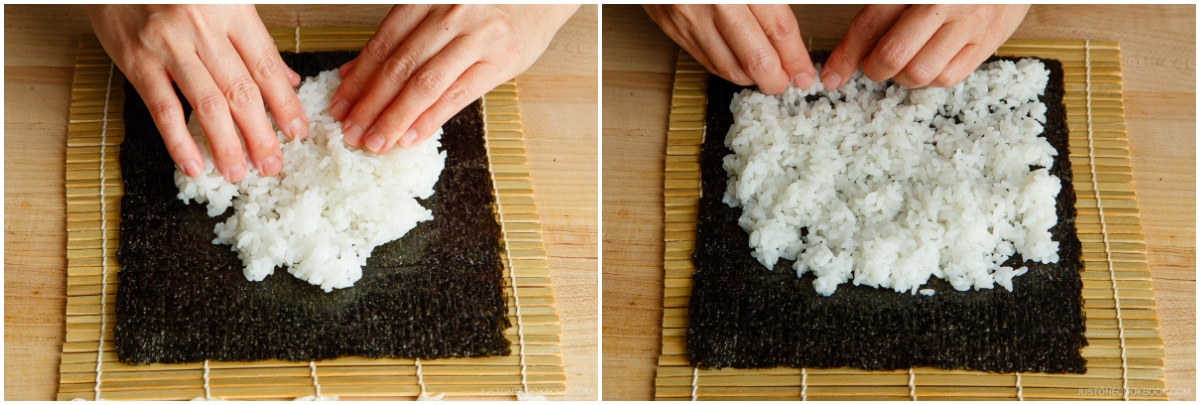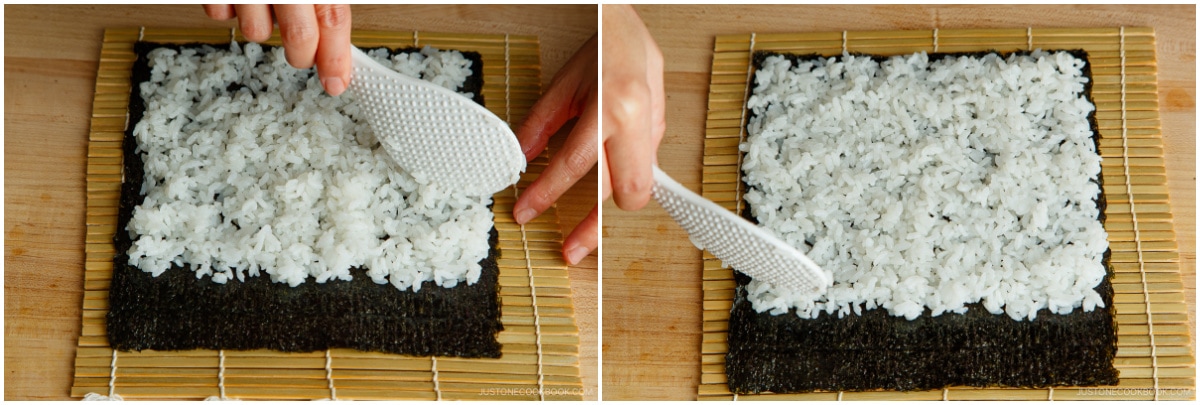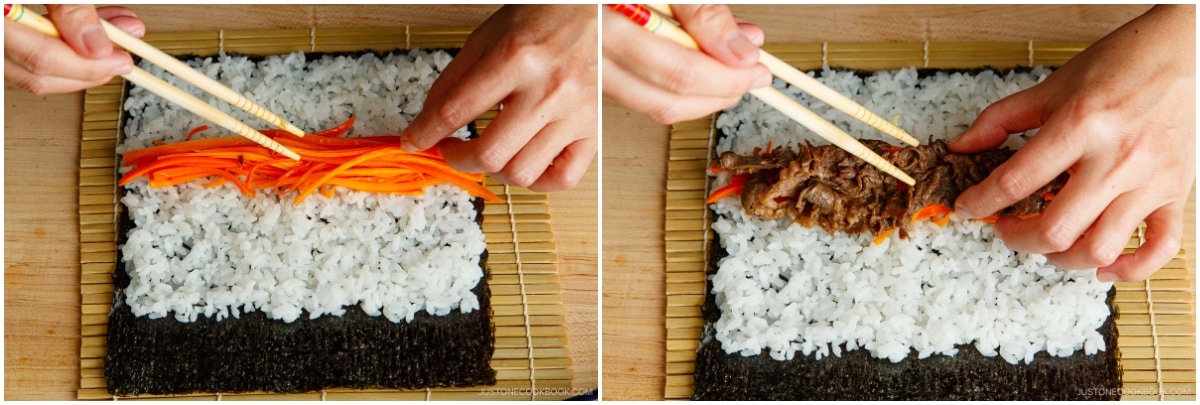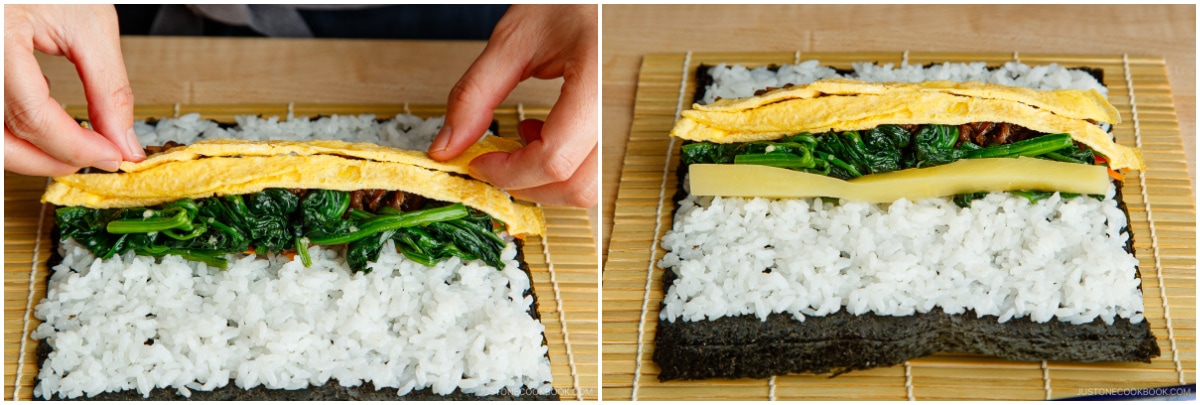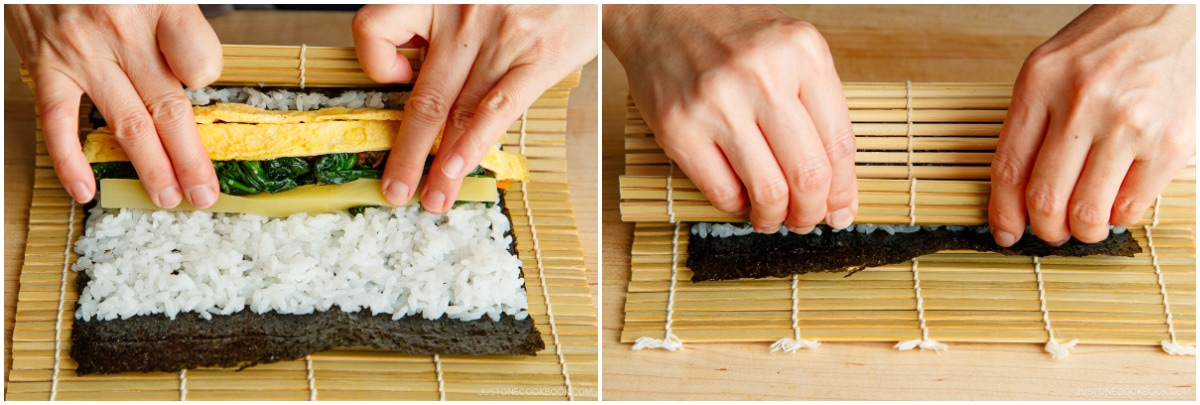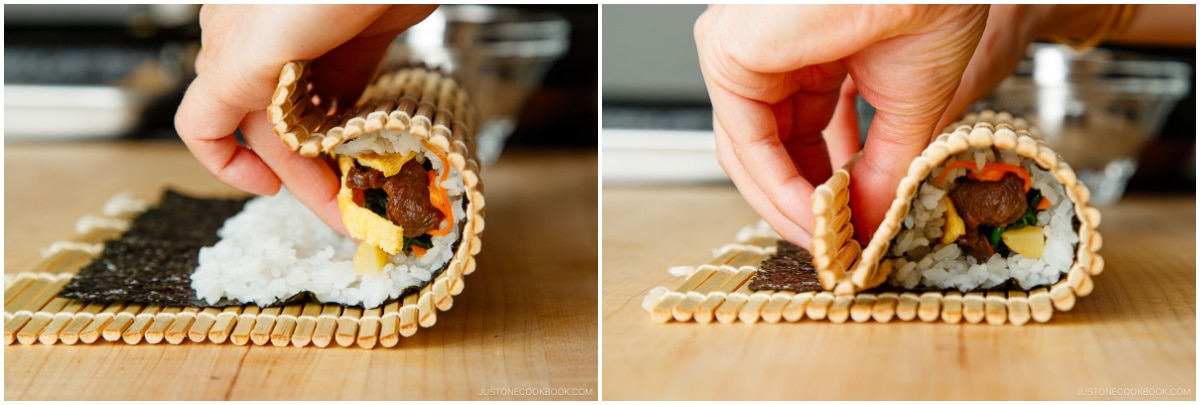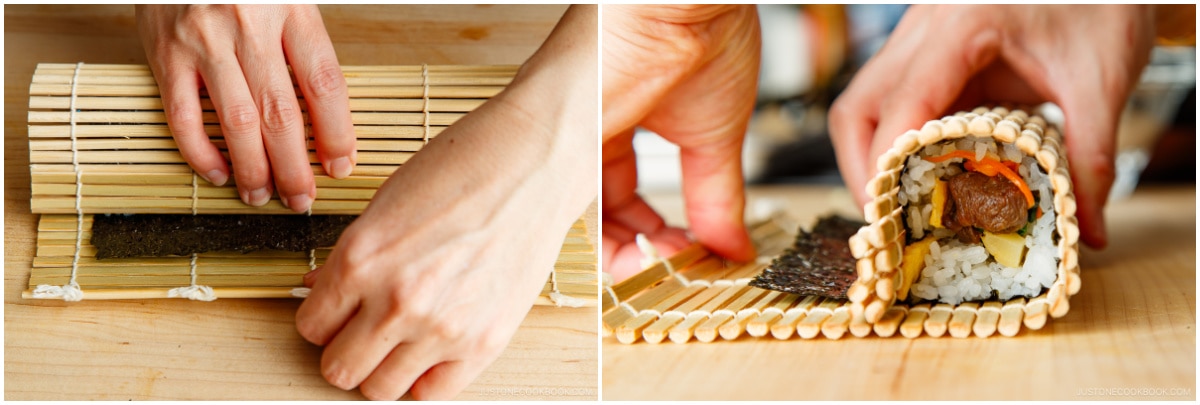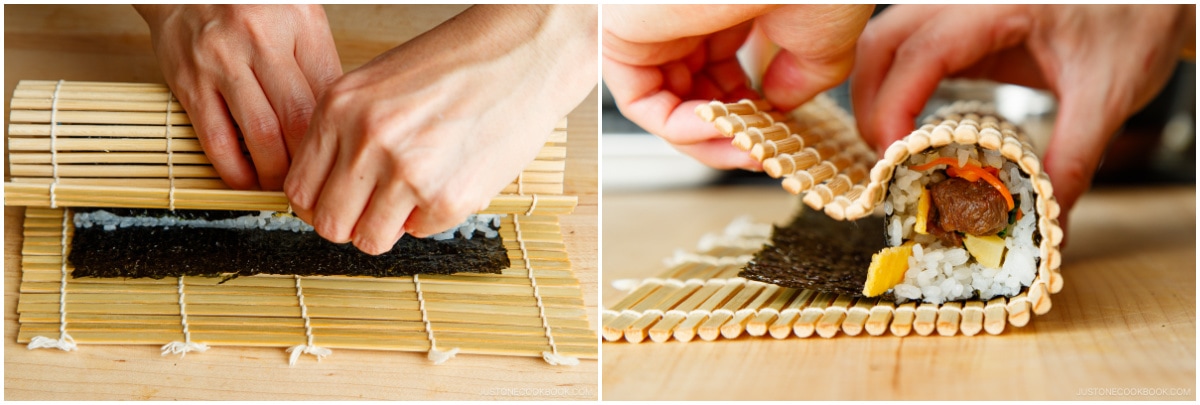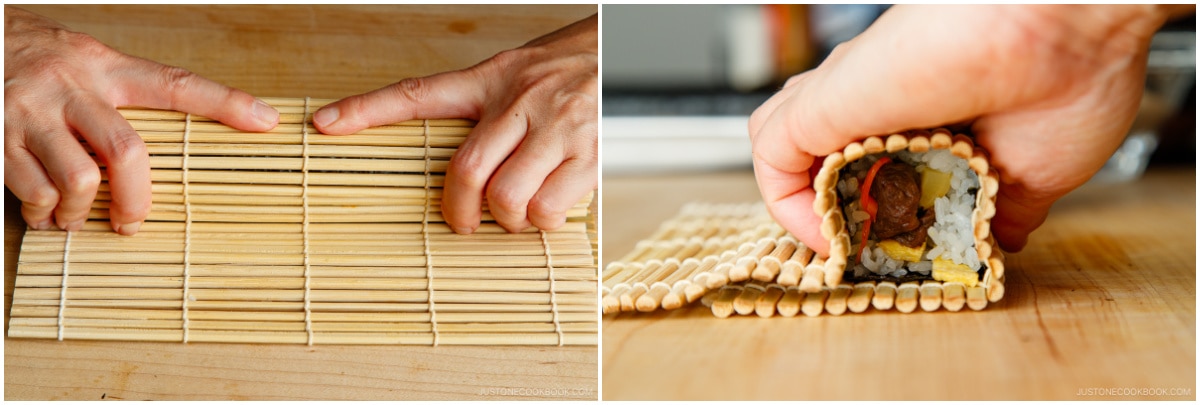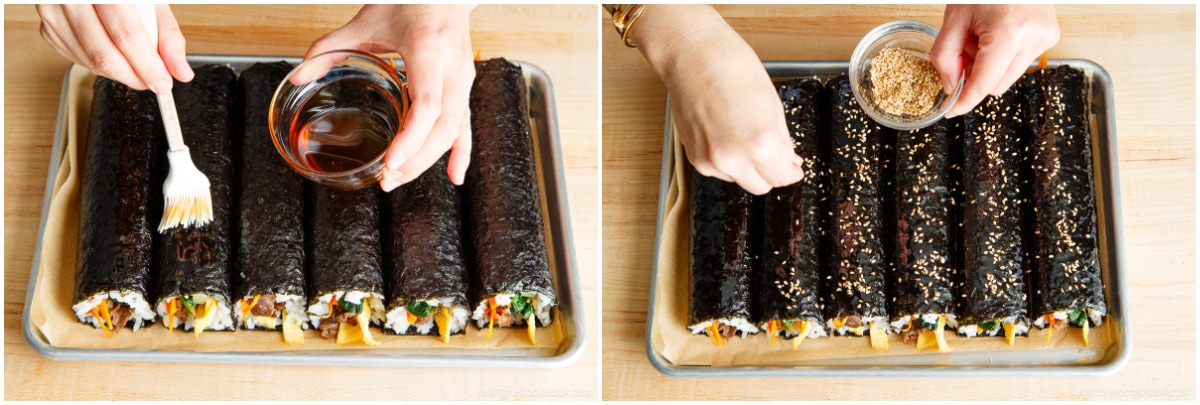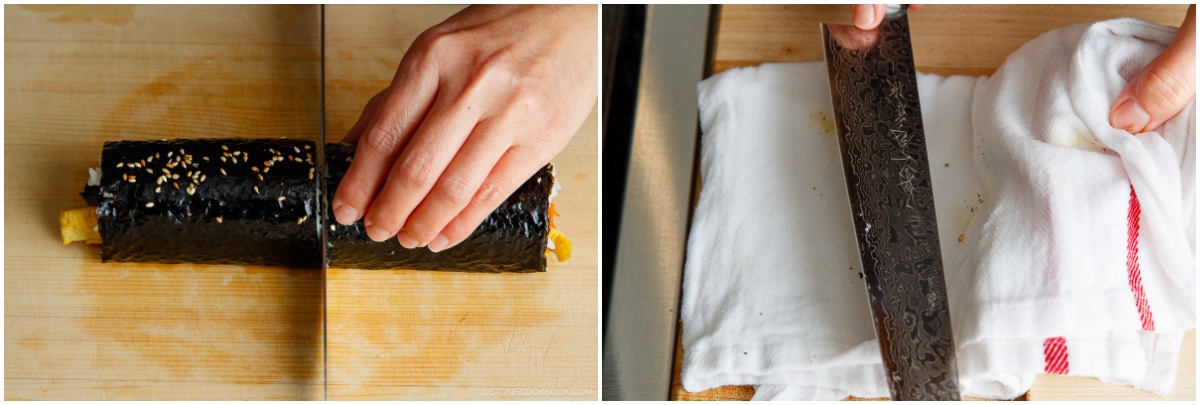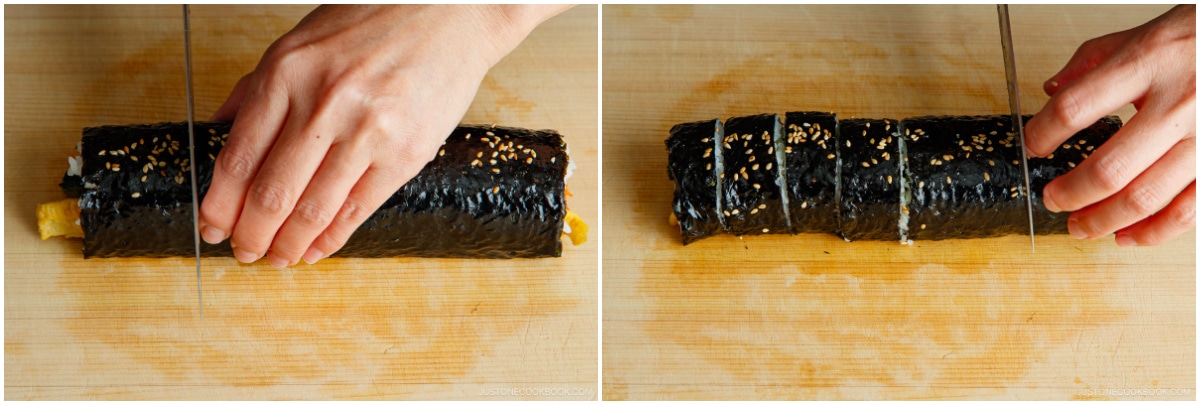Today, I’m sharing my personal recipe for Kimbap, the delicious Korean seaweed rice roll. My kids love it and I make it at home often! It’s a casual and satisfying handheld food that I feed my busy teens as they’re coming and going from one activity to the next. You might wonder, “Why is a Korean recipe on a Japanese food blog?” Actually, Korean cuisine is very popular in Japan these days, where you can easily find kimbap at supermarkets and convenience stores. Japanese also enjoy making these rolls at home and packing them for lunch or a picnic. It’s become so mainstream that uncut kimbap has become a popular choice for the Setsubun festival on February 3rd, when Japanese traditionally eat Ehōmaki, an uncut sushi roll, like a burrito. Much like Japanese onigiri (rice balls), kimbap is the ultimate convenience food! If you haven’t tried these Korean seaweed rolls yet, I know you’ll love them. Read on, and I’ll teach you how I make beautiful kimbap rolls with my step-by-step instructions and techniques.
What is Kimbap?
Kimbap (김밥), also known as gimbap, is a traditional Korean seaweed (kim) and rice (bap) roll. It looks very similar to sushi, but there are slightly different.
Kimbap vs. Sushi Roll
For kimbap, the rice is either plain or seasoned with sesame oil and salt, while the seaweed is brushed with sesame oil and sprinkled with sesame seeds. The fillings are usually cooked or pickled ingredients. For a sushi roll, the rice is seasoned with vinegar, sugar, and salt. The fillings are generally raw fish or some cooked ingredients.
Authentic Kimbap Recipes
I’ve seen how kimbap is made countless times and know how to make sushi rolls, so the kimbap recipe I’m sharing here is how I’d usually make it. For an authentic kimbap recipe, I encourage you to visit the websites of my dear Korean friends and learn more about this dish and other delicious recipes. I’ve known them for a long time, and their recipes never disappoint me! I’ve linked to their kimbap recipes below:
Seonkyoung Longest Korean Bapsang My Korean Kitchen Maangchi Beyond Kimchee
Ingredients for Kimbap
You’ll need seaweed, short-grain rice, protein, and vegetables for a basic kimbap roll:
Nori (dried laver seaweed) sheets: Aim for good-quality nori sheets; Otherwise, the nori may become too chewy and gummy. Cooked short-grain white rice: You’ll need about 1 cup of cooked rice per roll. Protein: I used bulgogi-style seasoned beef and egg omelette strips. Colorful vegetables: Cooked and seasoned carrot and spinach add vibrant color, texture, and nutrients. Pickled daikon (takuan) adds a tangy crunch! Toasted sesame oil: Brush it on top of the rolled Kimbap for a lovely aroma and taste.
How to Make the Best Kimbap
Follow my cooking steps and rolling techniques for perfect Korean seaweed rice rolls every time!
Where to Buy a Sushi Making Kit
Substitution Tips and Variations
You can certainly use and experiment with other ingredients as well.
Change up the protein with fish cake strips, imitation crab sticks (kanikama), chicken, pork belly, spicy pork, or even ham. You can skip the meat or fish to make it vegetarian, or omit the egg to make it vegan. Try adding other vegetables like simmered burdock root, cucumber strips, lettuce, and perilla leaves (shiso). Bean sprout namul and napa cabbage kimchi are other delicious filling options. Add gochujang (Korean chili paste) to your beef marinade or cooked vegetables for a spicy-sweet umami kick.
Recipe Tips and Techniques
Prepare the filling ingredients while the rice is soaking and cooking. It takes about an hour to soak and cook the rice. During this time, you can marinate the beef, fry the omelette, and cut and cook the vegetables. Use thinly sliced beef that‘s easy to marinate, cook, and slice. You can find it at a Korean or Japanese market. You can also slice meat thinly at home. Pan-fry the fillings in the order shown in the recipe card. If you cook the lightly-seasoned ingredients first and end with the heavily-seasoned ingredients, then you only have to wash the frying pan once after you finish cooking everything. Use water to moisten your fingers and measuring cup to keep the cooked rice from sticking. Spread the rice evenly on the nori sheet to create an even shape and uniform thickness across your roll. Add the fillings in the right order, starting with the smaller ingredients and ending with the easy-to-hold ingredients. This is the key to holding the stacked filling in place as you roll the kimbap. You’ll be rewarded with a beautiful cross section when you slice the rolls!
How to Store
It‘s best to enjoy kimbap the same day you make them, like sushi. Try not to refrigerate kimbap unless you need to keep it for the next day, as the rice can become hard and dry. If you need to refrigerate them, wrap the rolls in plastic and a thick kitchen towel to keep the rice cool and safe without getting cold.
What to Serve with Kimbap
Kimbap is wonderful served as a complete meal on the go in your lunchbox. It’s a fun family meal or party food to serve cut and stacked in a tower on a large platter. You can also serve it as an appetizer or a side dish (banchan) alongside other dishes. Try some of our favorite Korean recipes to serve with Kimbap:
Quick Korean Fresh Kimchi Kimchi Jjigae (Kimchi Stew) Korean Pancake Gluten-Free Korean Veggie Pancake
Wish to learn more about Japanese cooking? Sign up for our free newsletter to receive cooking tips & recipe updates! And stay in touch with me on Facebook, Pinterest, YouTube, and Instagram.

